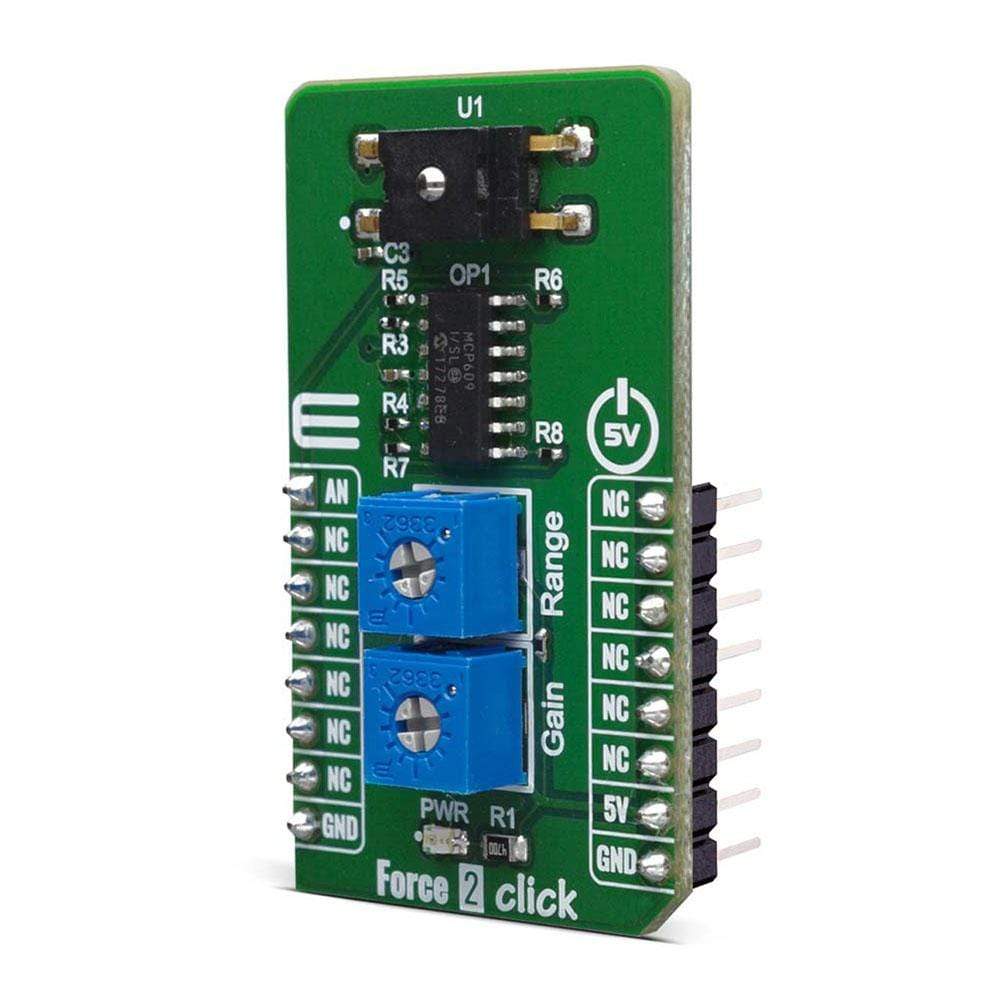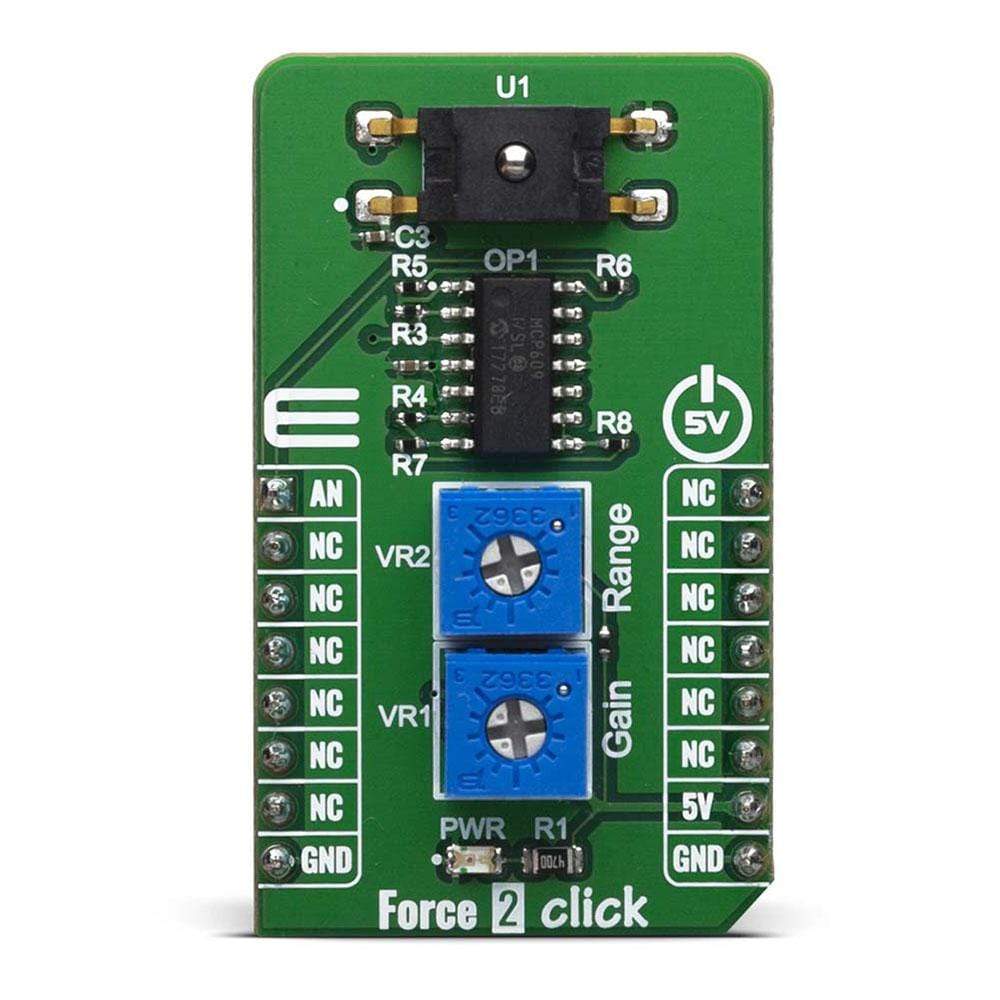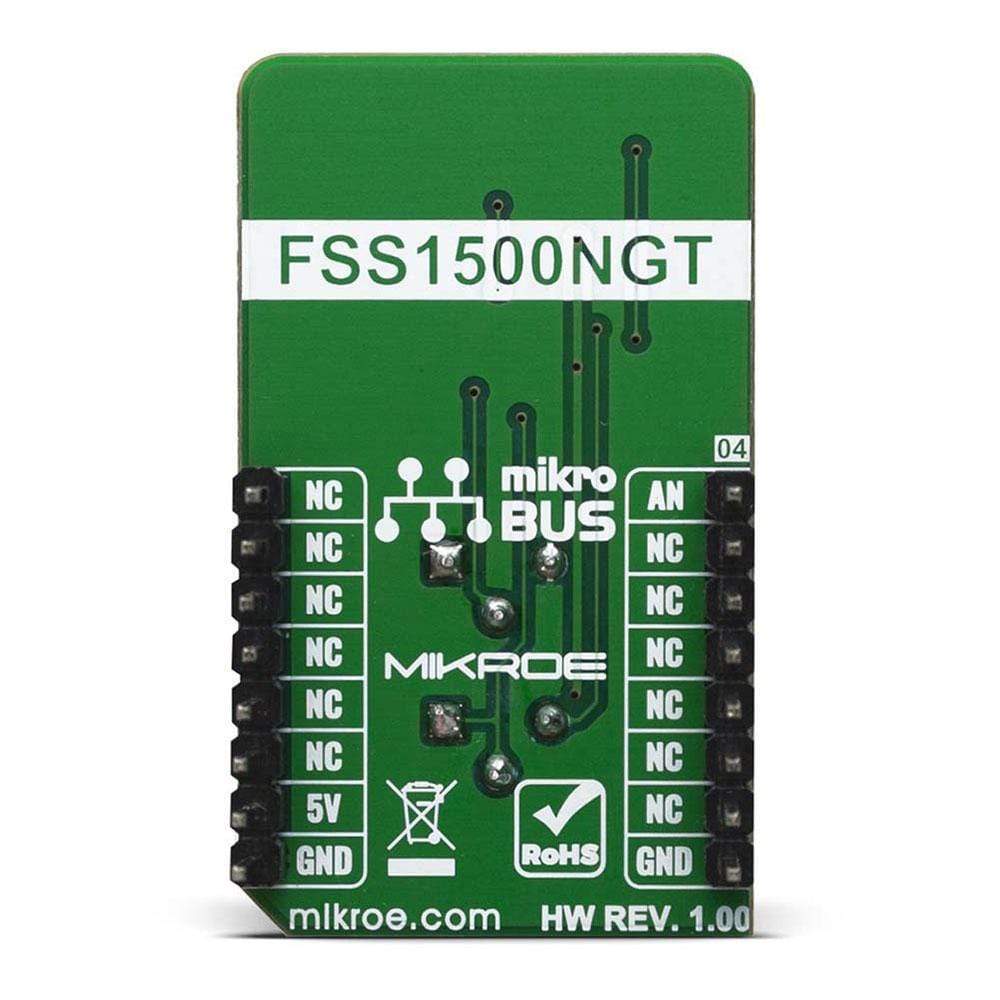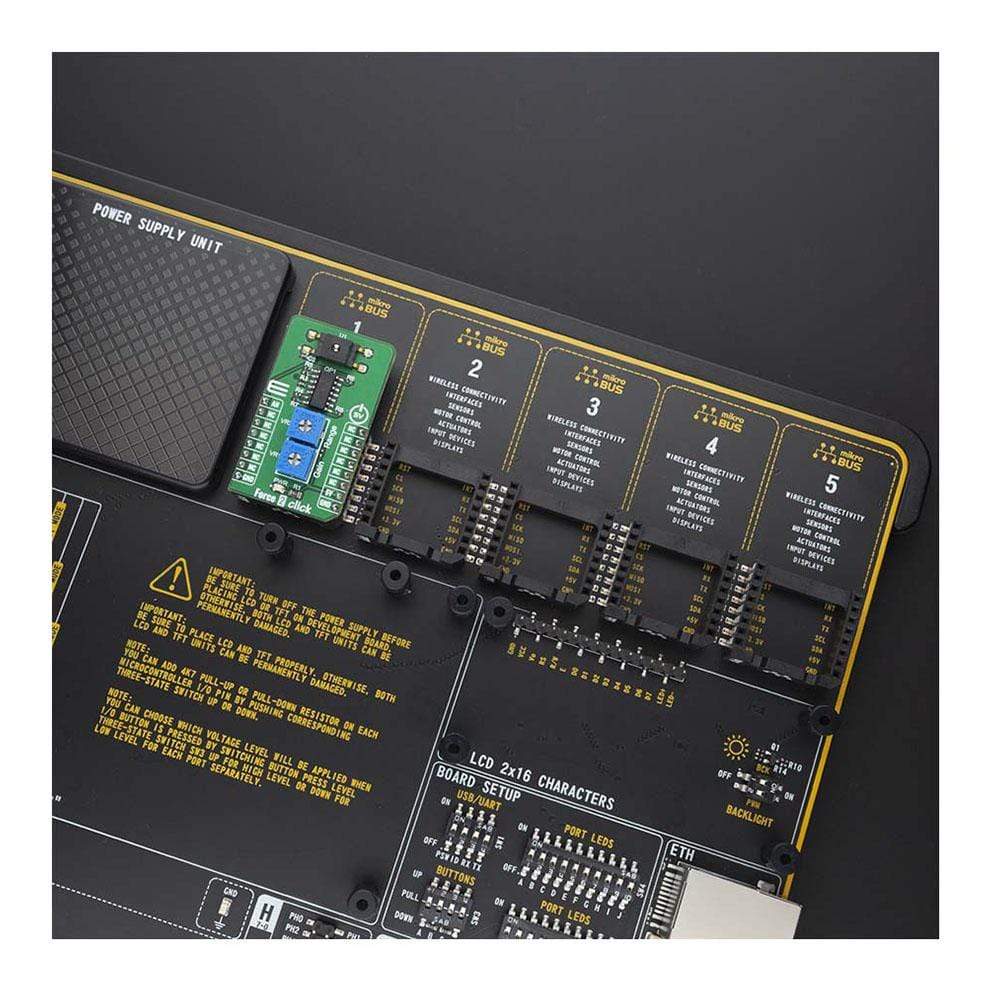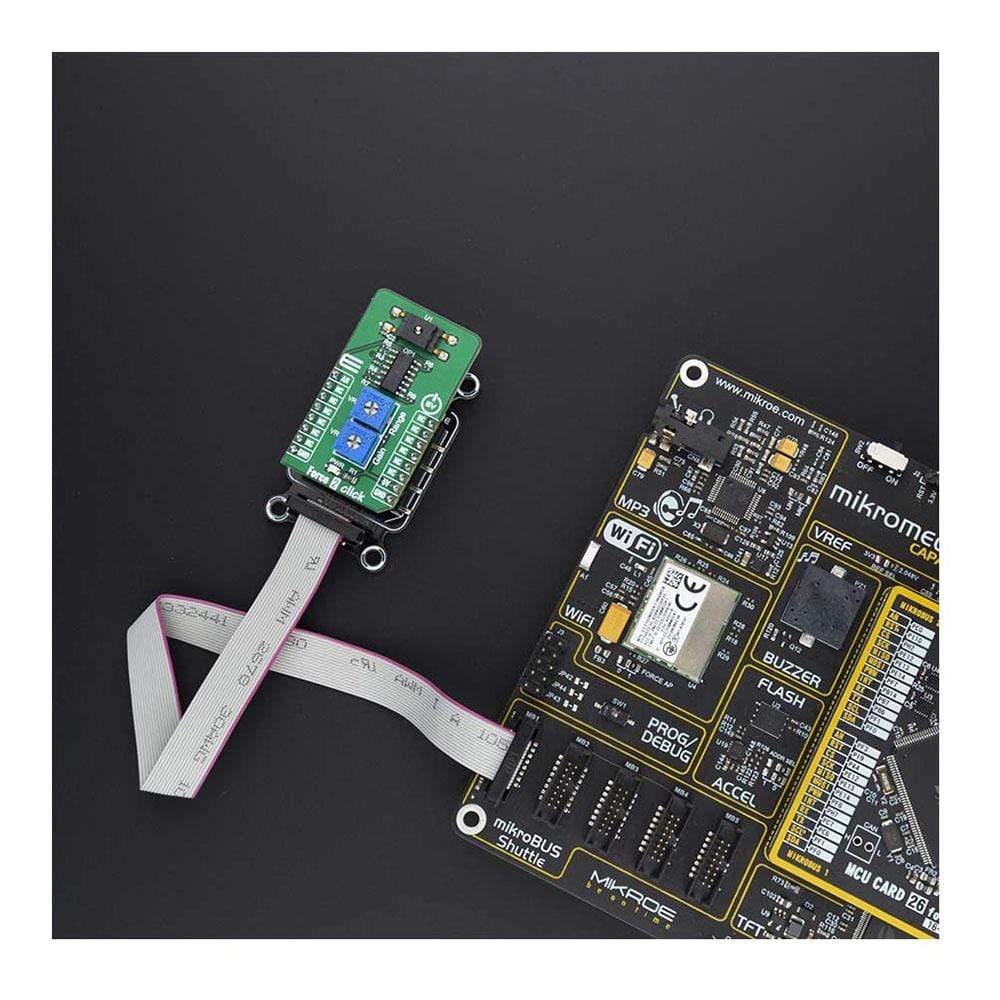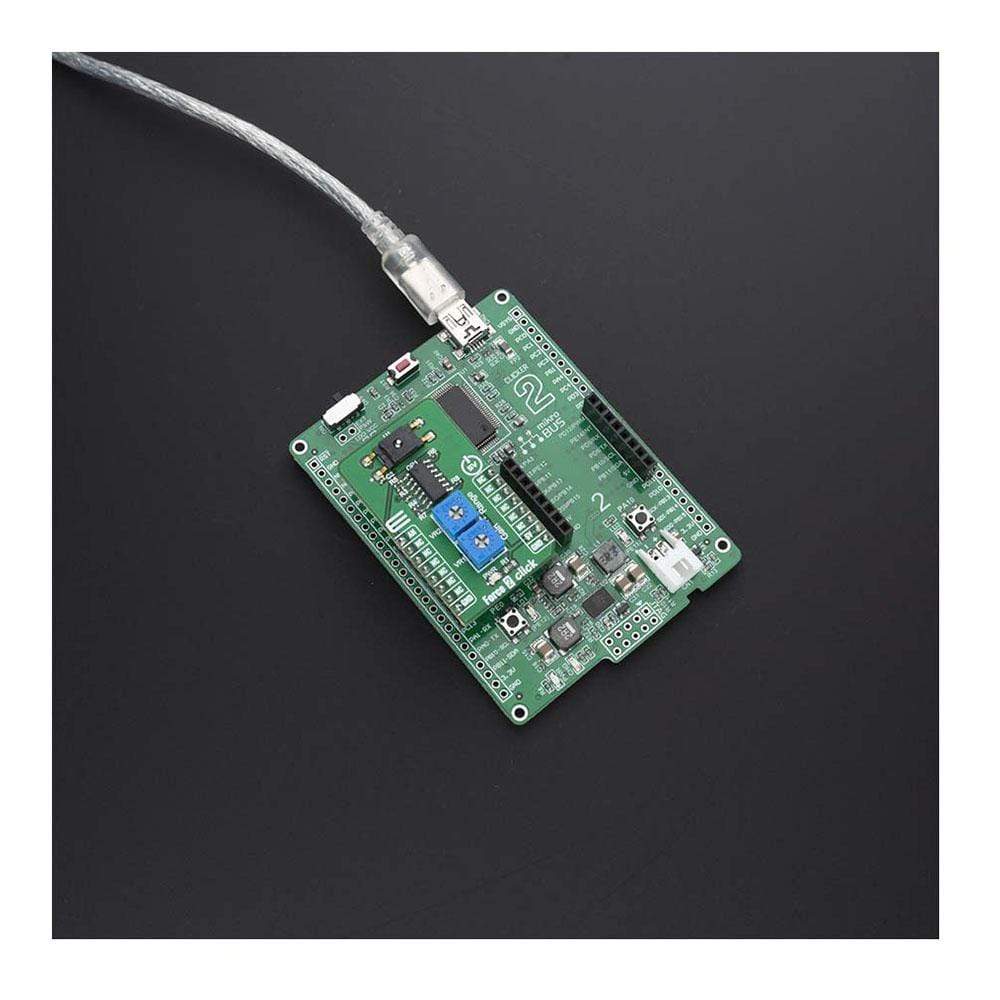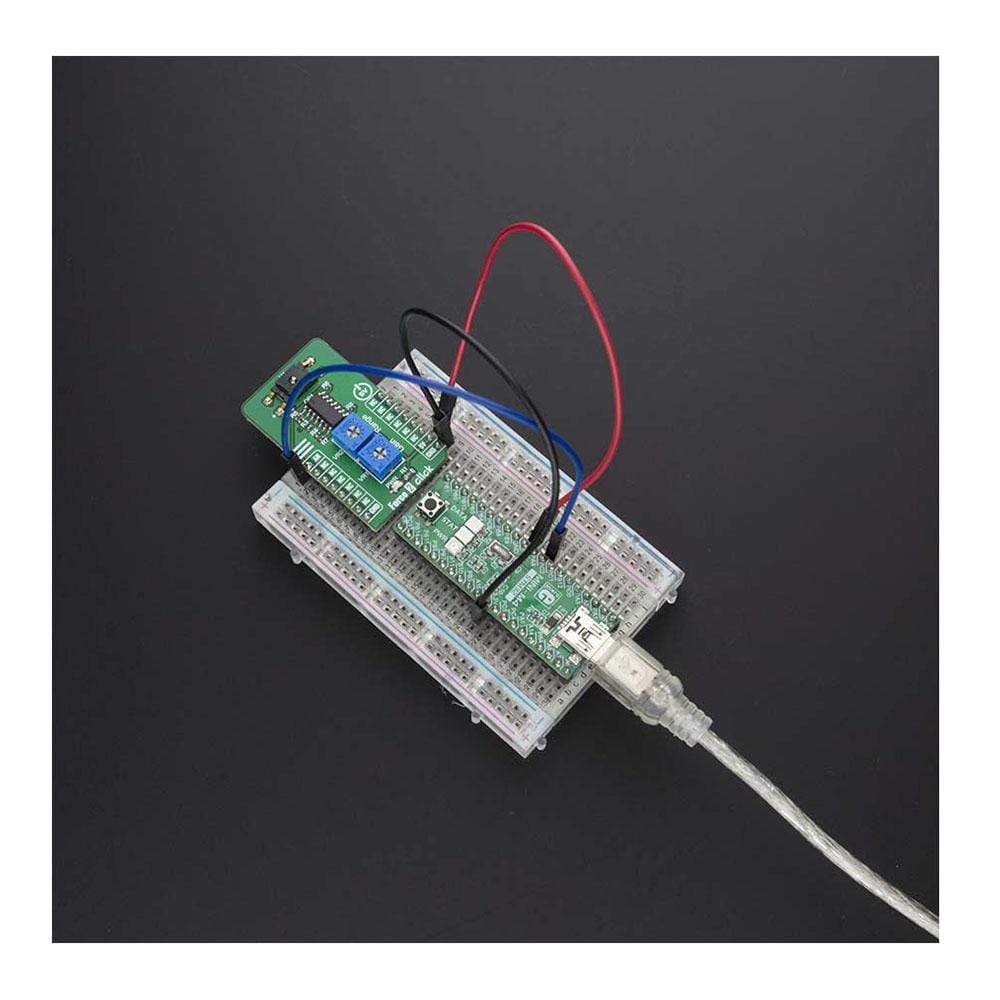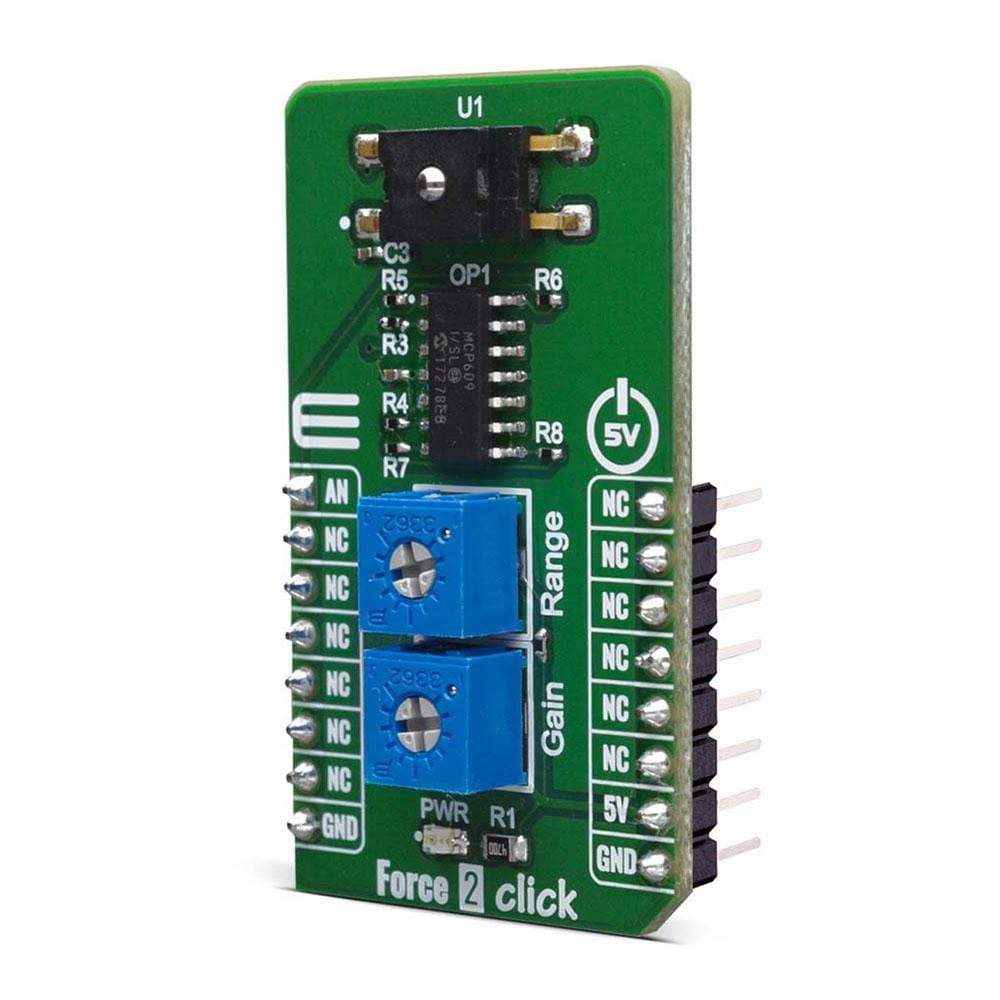

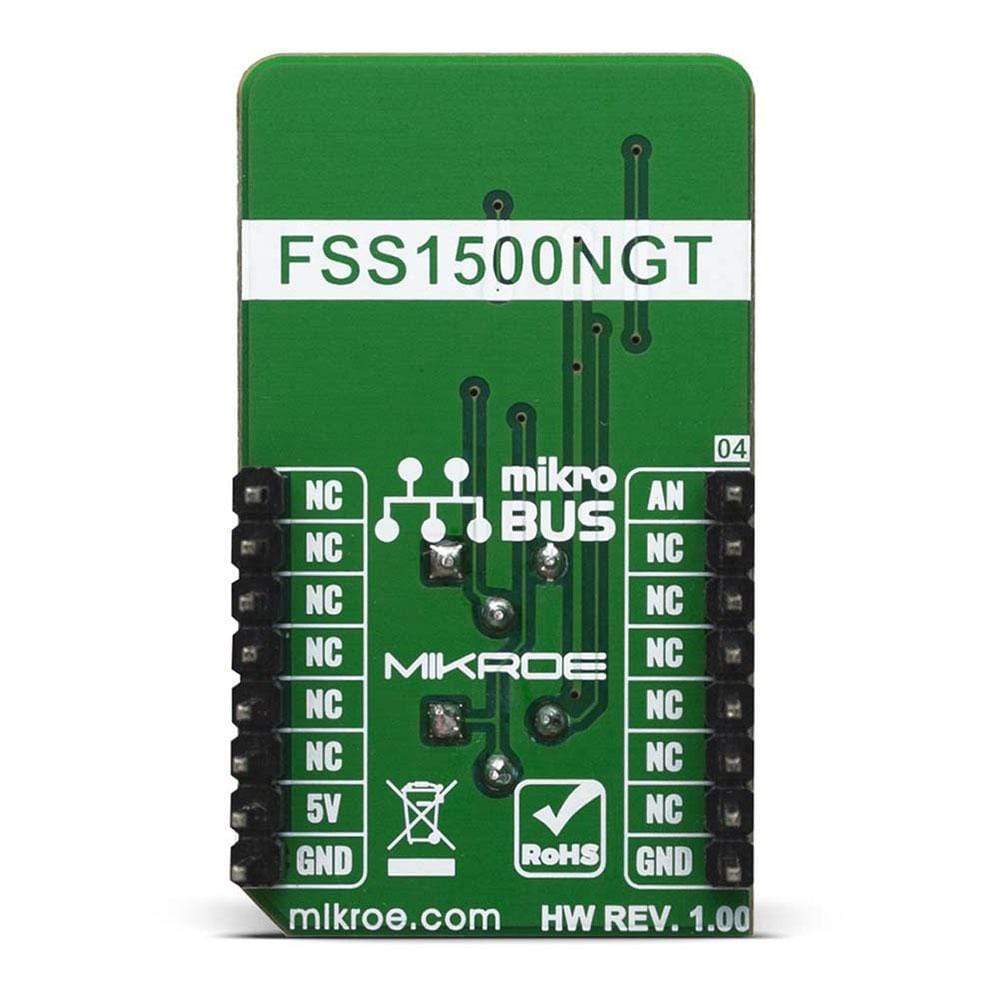
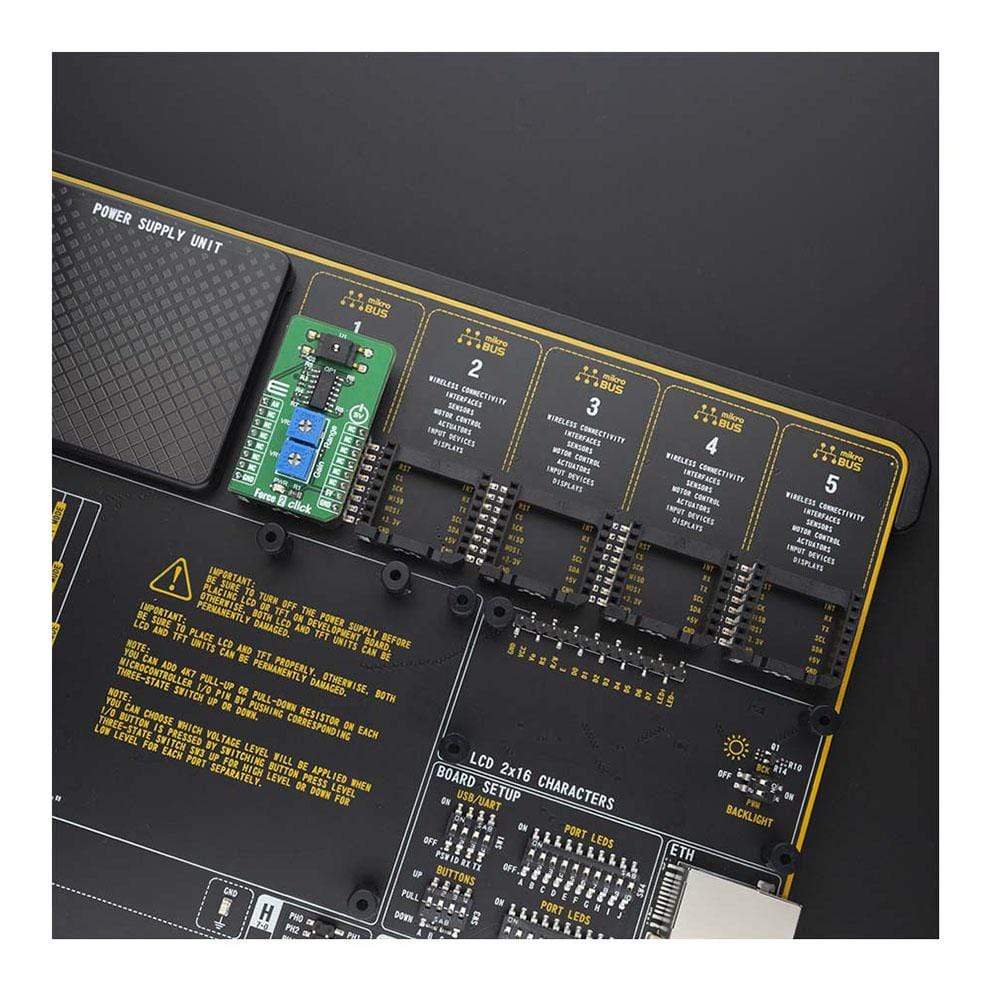
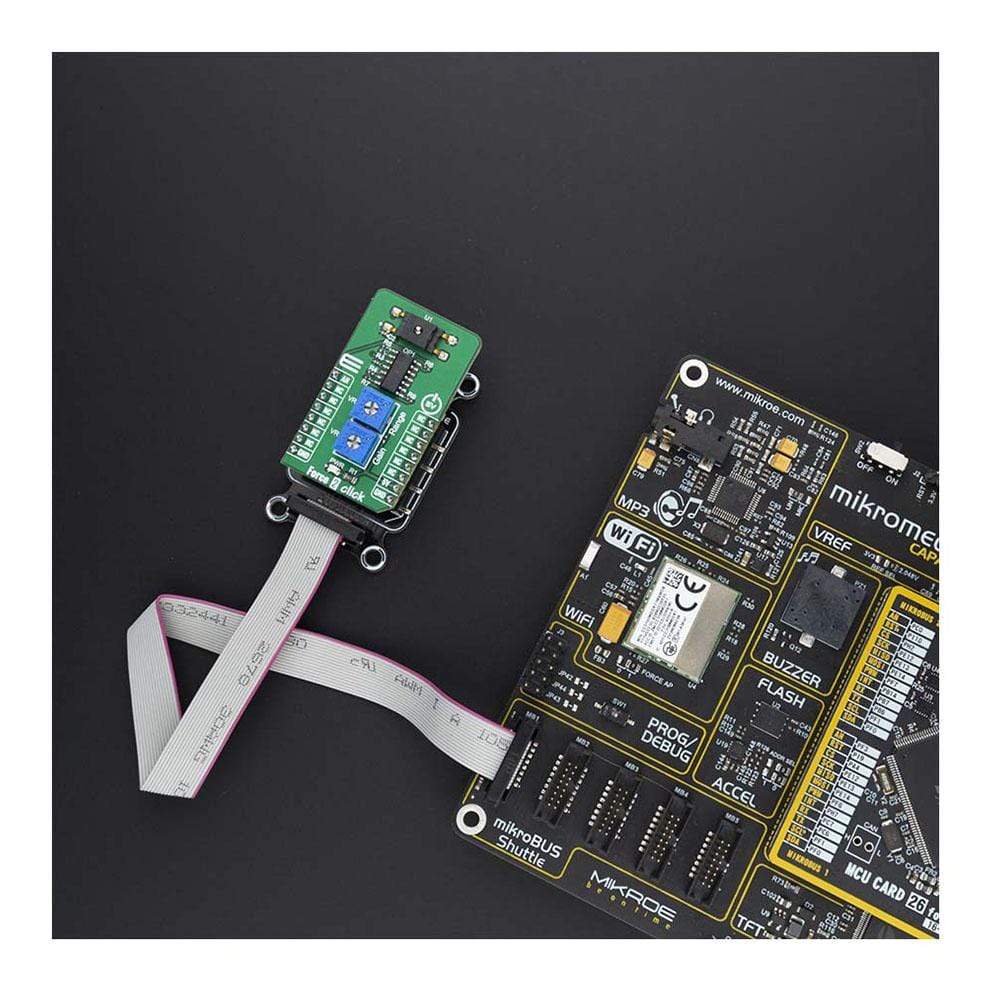
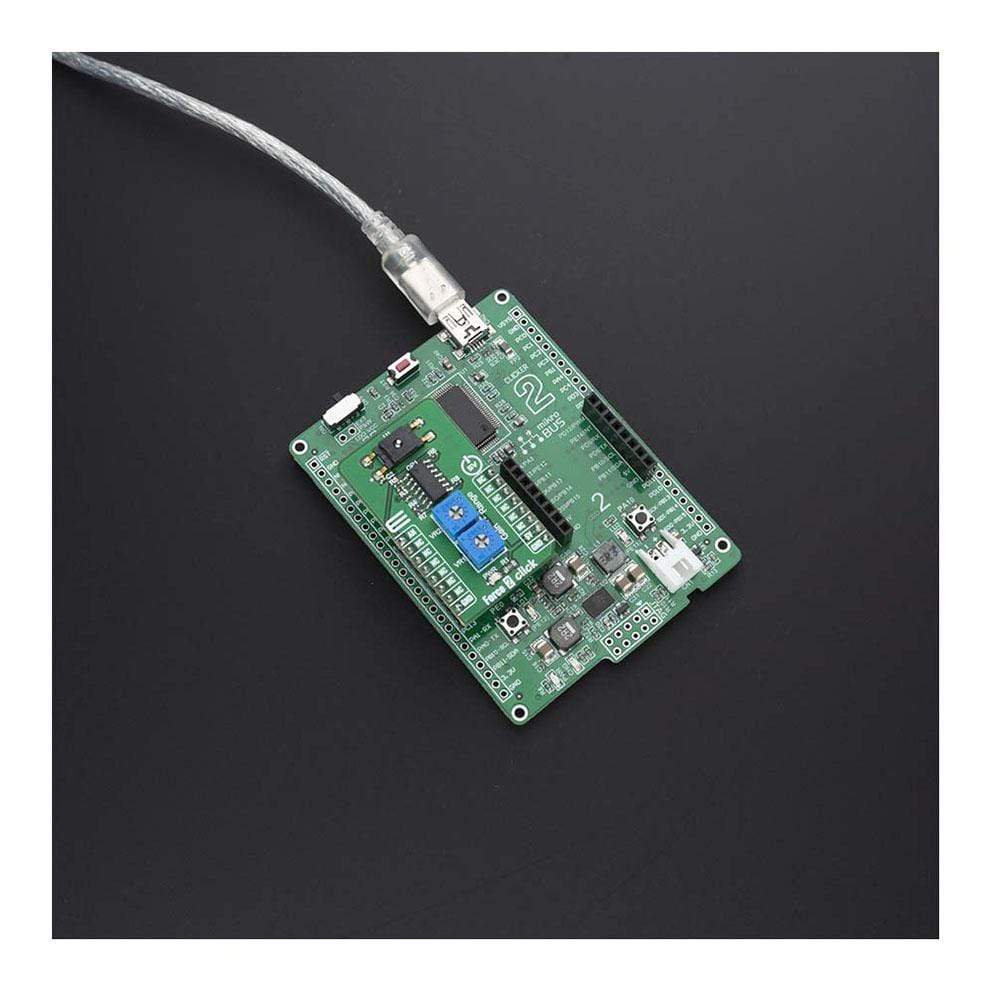

Overview
The Force 2 Click Board™ is a mikroBUS™ add-on board with circuitry for implementing Honeywell’s FSS1500NGT Series force sensors into your projects (with a single zone force-sensing resistor included with the click). This Click Board™ utilizes FSS1500NGT force sensor which is designed to be one of the most reliable force sensor available as illustrated by 20 million Mean Cycles to Failure (MCTF) at 25 °C [77 °F] rating. This low profile Surface Mount Technology (SMT) sensor allows for automated assembly on a printed circuit board, often helping the customer to reduce assembly costs while maintaining precise and reliable force sensing performance in a compact commercial-grade package.
The Force 2 Click Board™ is supported by a mikroSDK compliant library, which includes functions that simplify software development. This Click Board™ comes as a fully tested product, ready to be used on a system equipped with the mikroBUS™ socket.
Downloads
How Does The Force 2 Click Board™ Work?
The FSS1500NGT force sensor incorporates Honeywell sensing technology that uses a specialized piezoresistive micromachined silicon sensing element. The low power, unamplified, uncompensated Wheatstone bridge circuit design provides inherently stable mV output over the force range. The sensor package design incorporates patented modular construction. The use of innovative elastomeric technology and engineered molded plastics results in load excitation capacities up to 60 N (range dependent). The stainless steel ball provides excellent mechanical stability, and is suitable for a variety of potential medical and commercial applications.
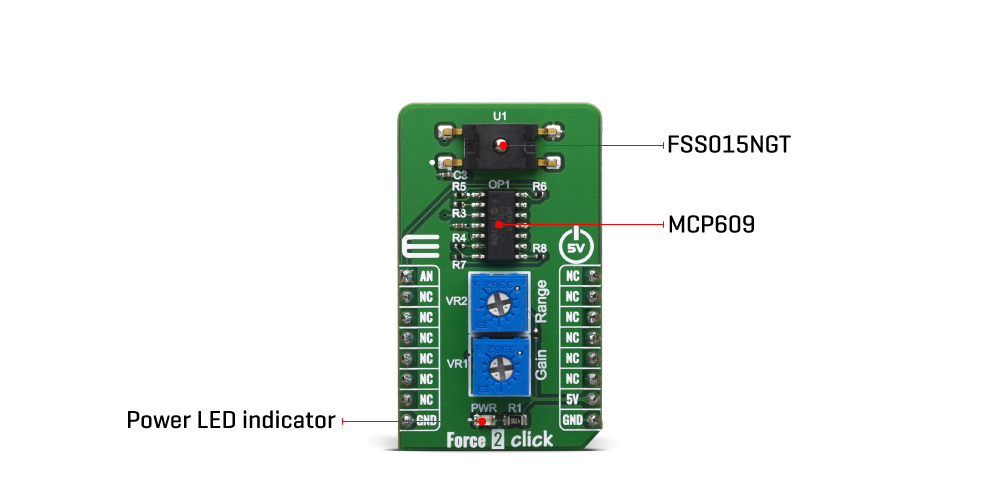
The Force 2 Click Board™ also contains all the needed circuitry, required to get precise measurements from the sensor. It includes four operational amplifiers in total, forming one differential amplifier, with voltage adder, which can be used to set the measurement range. Gain setting is also available, in order to enable user to easily set this click board according to various needs. Range and gain are both set using the onboard multi-turn trimmers VR1 and VR2. That way, it is ensured that the precise setting can easily be done. The output of the differential amplifier is connected to the analog pin AN of mikroBUS™.
Force sensors operate on the principle that the resistance of silicon-implanted piezoresistors will change when the resistors flex under applied force. The sensor concentrates force from the applications, through the stainless steel ball, directly to the silicon-sensing element. The amount of resistance changes in proportion to the amount of force being applied. This change in circuit resistance results in a corresponding mV output level change. Low voltage supply allows for use in many battery powered applications.
The Force 2 Click Board™ have FSS1500NGT force sensor on it and the force sensing range is 0-15N with overforce (the maximum force which may safely be applied to the product for it to remain in specification once force is returned to the operating force range) up to 45N.
The power supply is 5V and this allows only 5V MCUs to be interfaced with the Click boards™ directly.
SPECIFICATIONS
| Type | Force |
| Applications | FSS1500NGT sensor is used in medical and industrial purposes, like infusionand ambulatory non-invasive pumps, kidney dialysis machines, load and compression sensing, variable tension control, robotic end-effector, etc. |
| On-board modules | FSS015NGT Honeywell's FSS-SMT Series force sensor |
| Key Features | FSS015NGT force sensor on it and the force sensing range is 0-15N with overforce up to 45N |
| Interface | Analog |
| Compatibility | mikroBUS |
| Click board size | S (28.6 x 25.4 mm) |
| Input Voltage | 5V |
PINOUT DIAGRAM
This table shows how the pinout of the Force 2 Click Board™ corresponds to the pinout on the mikroBUS™ socket (the latter shown in the two middle columns).
| Notes | Pin |  |
Pin | Notes | |||
|---|---|---|---|---|---|---|---|
| Analog | AN | 1 | AN | PWM | 16 | NC | |
| NC | 2 | RST | INT | 15 | NC | ||
| NC | 3 | CS | RX | 14 | NC | ||
| NC | 4 | SCK | TX | 13 | NC | ||
| NC | 5 | MISO | SCL | 12 | NC | ||
| NC | 6 | MOSI | SDA | 11 | NC | ||
| NC | 7 | 3.3V | 5V | 10 | 5V | Power Supply | |
| Ground | GND | 8 | GND | GND | 9 | GND | Ground |
ONBOARD SETTINGS AND INDICATORS
| Label | Name | Default | Description |
|---|---|---|---|
| LD1 | PWR | - | Power LED Indicator |
| VR1 | Gain | - | Gain adustment potentiometer |
| VR2 | Range | - | Range adustment potentiometer |
| General Information | |
|---|---|
Part Number (SKU) |
MIKROE-4046
|
Manufacturer |
|
| Physical and Mechanical | |
Weight |
0.019 kg
|
| Other | |
Country of Origin |
|
HS Code Customs Tariff code
|
|
EAN |
8606018717101
|
Warranty |
|
Frequently Asked Questions
Have a Question?
Be the first to ask a question about this.

